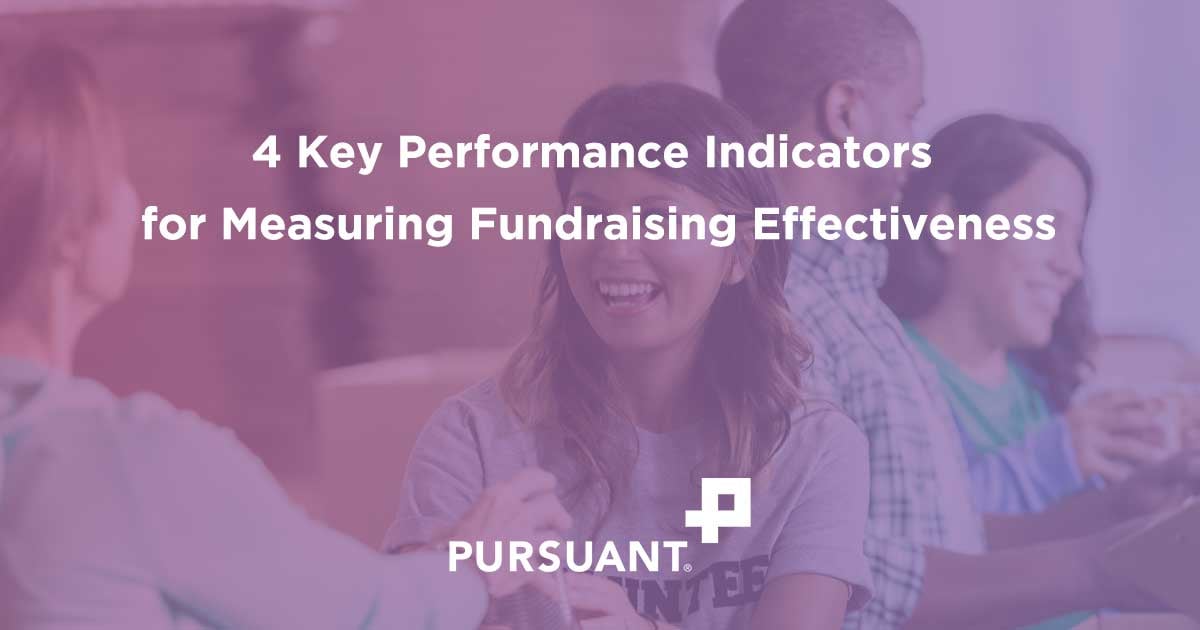4 Key Performance Indicators for Measuring Fundraising Effectiveness

Measuring the success of your relationship fundraising means taking a more long-term approach centered on developing, maintaining, and upgrading donor relationships instead of hitting dollars raised, response rate, and new donor goals.
These four key performance indicators (KPIs) can help you evaluate opportunities to improve your donor centric strategy and develop deeper donor relationships.
4 Key Performance Indicators for Measuring Fundraising Effectiveness
1. Donor Lifecycle Migration is the progression a donor makes in moving from being a prospect to the first and second gift to upgrading the amount to multi-year gifts and finally to major giving.
What would change about your strategy if you knew the average time it takes to move someone from prospect to donor or from first gift to second gift? What if you knew the percentage of donors who gave a second gift in that average time frame? Or how quickly (or slowly!) a donor moves from an annual gift to a major gift? This could inform your decisions about stewarding donors at each step in the process, and help you build a strategy to expedite the timeline dramatically.
2. Cross-Channel Donor Movement functions just like any other human relationship. Deeper personal relationships aren’t limited to just one method of communication. You communicate with your spouse in person, on the phone, by text or email, or over a meal.
When donors interact with your organization across several different channels (email, Web, social media, telemarketing, events, face to face, direct mail, etc.), it’s indicative of deeper engagement. The deeper the relationship, the higher the lifetime value to your organization.
3. Real Retention metrics identify the individual donor who has stuck with the organization over time. Aggregate retention measures can be misleading.
For example, an organization with 3,000 donors last year and 3,100 donors this year appears to have great retention. But we must look at the gains and losses separately. If the organization lost 1,500 donors this year but gained 1,600 first-time donors, then the acquisition numbers look great, but there’s clearly a retention problem. Even the best acquisition program can’t make up for something that’s amiss later on in the donor lifecycle and causing donors not to renew. Conversion to a second gift and the factors leading to multi-year loyalty must also be closely examined.
4. The Critical Ratios, such as the cost of acquiring and retaining donors over the lifecycle, are important to measure. Don’t just consider the current year’s data. Look at several years at a time, and measure dollars as well as donors.
One year of data for an acquisition campaign will seem overly costly at first glance. But a decision to throw out a campaign for that reason alone might as well be a decision to toss out the acquired donors as well. Your willingness to look at ratios over the long term will provide the information you need to determine stewardship effectiveness.
Donor-centric fundraising is a fundamentally different approach. It requires moving away from how we have been viewing donors for decades and embracing a new way of measuring fundraising success.
